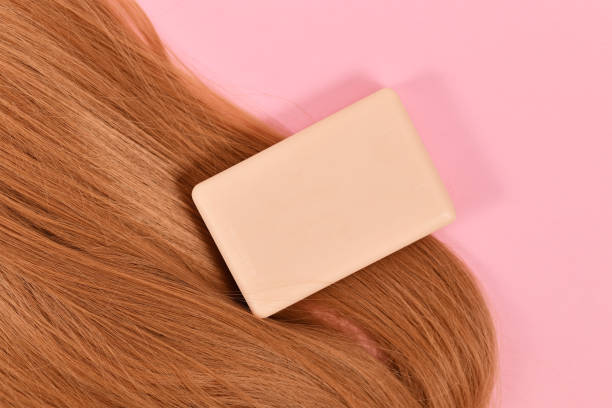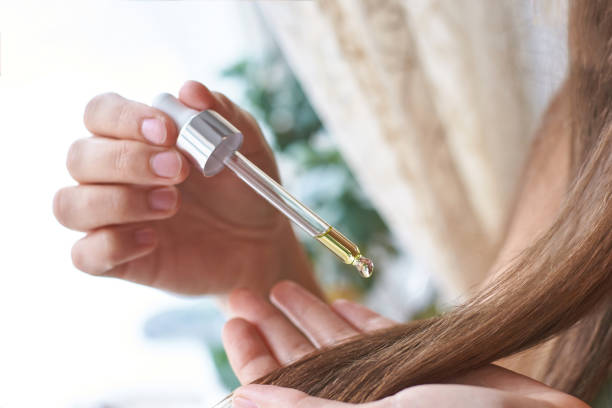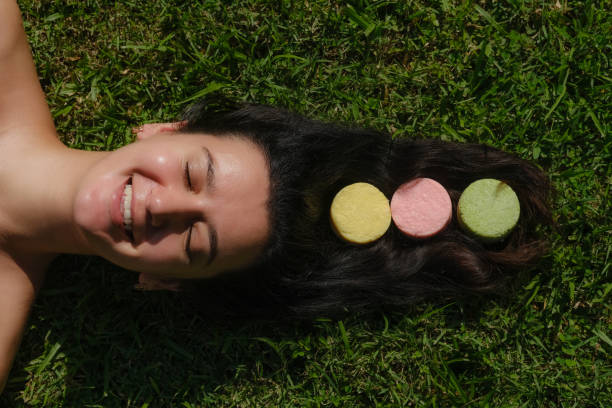A shampoo bar, also known as hair soap, solid shampoo, and shampoo soap, is essentially just shampoo in a solid form. Due to the lack of liquid, they are the perfect travel companion. Hair soap is also better for the environment than its liquid counterparts because they don’t require a plastic container. However, how do you apply hair soap? Don’t be alarmed; we go into great detail about that here.
Table of Contents
What is a Shampoo Bar?
It’s Not Soap
These tiny blocks of magic are soap-free, not like regular soap (or other shampoo bars available on the market that contain soap). This is crucial because soap is much more alkaline than hair, which is why most people avoid using it (just think of the waxy residue and limp locks).
Our shampoo bars are pH balanced because we avoid using soap in them, which benefits your hair tremendously. Additionally, it implies that using them in hard water is safe.
It Does Lather
Exactly like liquid shampoo, our shampoo bars produce a lather. Yes, they are quite cunning, and all it takes is one soft, creamy wash to make you addicted to these tiny nutrient nuggets. Our salon-quality shampoo bars are made with high-quality ingredients and leave your scalp clean, your hair silky, and your moral compass fired up.
To achieve that creamy lather, we use surfactants derived from coconut oil rather than alternatives derived from palm oil, like SLS or SLeS. But we can also help if you’re looking for shampoo bars without sulfates!
Why Use An Ethique Shampoo Bar?
They Feel Amazing
Check out our reviews to see that each bar is designed to give your hair salon-quality care, whether you’re using our shampoo bars for curly hair or unscented shampoo bars for a sensitive scalp.
They You to Help the Planet
We are doing good just by selling bars because our product is plastic-free and replaces products in a sector that produces a lot of waste! The carbon footprint of one of our shampoo bars is only 8% of that of a comparable liquid product. Each bar also prevents the production of or disposal in landfills of three 350 ml plastic bottles, whose concentration is equivalent to that of one bar.
We require more from sustainability. At Ethique, we strive for renewal by giving more than we receive. Since March 2021, we have been proudly climate-positive by offsetting 120% of our net carbon emissions. Additionally, all of our products are palm oil-free, vegan, and cruelty-free, and we do direct business with suppliers of ingredients all over the world.
They’re Kind to Your Wallet, Too.
With a concentration of high-quality, ethically sourced ingredients, our solid shampoos are tightly packed. Up to 80 washes are provided by each shampoo bar, costing $0.27 New Zealand dollars each. That is some cost-effective lathering.
Keep your bar dry in between washes to extend the life of the product because if you treat them well, they will be kind to you as well. We have some written suggestions for you to read if you want to learn more about how to store your shampoo bar.

How to Use a Shampoo Bar?
Well, actually, a piece of a lovingly crafted shampoo bar, but it’s still a piece of cake. Wash your hair with three very simple steps:
1. Directly apply the bar to your hair, working your way up to the ends. Depending on how thick your hair is, you should repeat this process three to five times.
2. Lay the bar down and use your hands to work the soap into your hair. Appreciate the smooth, creamy goodness.
3. Rinse, and enjoy the joy of clean hair. Some people might discover that shampooing twice is beneficial, particularly if the shampoo bar is one of our sulfate-free options. Afterward, if necessary, use a conditioner.
We’ve got a great little video that walks you through the washing process step by step if you learn best visually.
Tips on Using a Shampoo Bar
Rinse Your Hair With Apple Cider Vinegar
The cold process method is used to create the shampoo bar, making it genuine hair soap. Your skin has a pH of roughly 5, while real soap has a pH of around 8. Your pH can be lowered with a vinegar rinse. Your hair becomes softer and shinier when you use apple cider vinegar. Fortunately, you don’t have to squirt the entire bottle of apple cider vinegar over your head. You can get a long way if you put about 2 cm of apple cider vinegar in a glass and then add more water to it.
Rinse Your Hair With Cold/lukewarm Water
In particular, we are aware of spicy in winter. However, using cold or lukewarm water ensures that your hair cuticles close. And as a result, your hair will be less dull and frizzy. Of course, you could simply combine tips one and two.
Use Hair Oil on Dry Hair
Do you have dry or porous hair? The use of hair oil prior to combing may then be beneficial. Avoid using too much because it will become overly greasy again; frequently, a few drops distributed over the points are sufficient. For this, you can use high-quality olive oil or, for example, argan oil.

How Long Does the Transition Period Last For?
In actuality, your hair type plays a significant role in this.
I found that it took me more than two weeks to completely remove all the foul residue left over from the synthetic products I had been using up until the switch. I must have cried out in defeat at least a dozen times during the first two weeks because I felt so compelled to simply go back to the products I (and mostly my hair) had grown accustomed to. Then, though, it just worked! Furthermore, I can honestly say that my hair now appears much healthier and better than it ever did before the change.
So whenever I see posts on Facebook or social media of people just wanting to give up on soap bars because “they just don’t work out for them and their hair type”, Usually, I have a strong urge to reassure them, to tell them everything will be okay, and that if they just keep trying, are persistent, and patient, it will work!
Not only that, but this easy step can make your hair look much more natural and healthy, and in the end, it also protects the environment by preventing the flow of single-use plastic and toxic chemicals into our rivers and oceans and down our drains.
Summary
Don’t give up using a naturally made shampoo bar if you’re just getting started or if you’ve already tried one and noticed that it left your hair looking coated, dull, dry, or gummy. It will take some time for your hair to adjust to the natural ingredients in your new soap rather than the chemical ones in store-bought shampoos, so don’t worry about it. This is completely normal.
Follow all of these suggestions for at least two weeks, wash your hair no more than three or four times per week, and don’t forget to use the DIY pre- and post-shampoo rinses to get rid of buildup, mitigate the harm caused by hard water, restore your hair’s natural PH balance, and simply remove any other excess that may be stuck in your hair.





